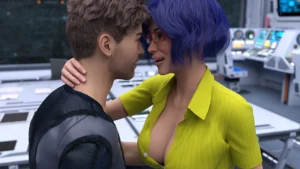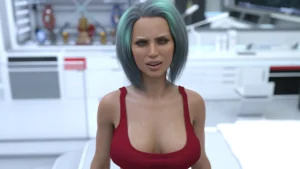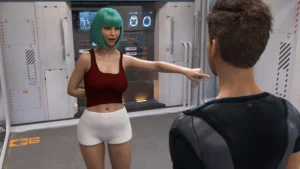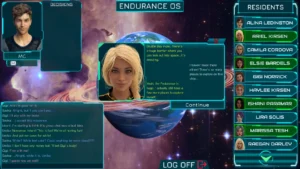
Stranded in Space
Play Stranded in Space
Stranded in Space review
Exploring the Controversial Adult Game
Stranded in Space is a game that has garnered significant attention for its adult themes and interactive storytelling. While it offers a unique blend of exploration and character development, some players find the adult content overwhelming. This article delves into the game’s mechanics, its reception among players, and what makes it stand out in the adult gaming genre.
Gameplay Mechanics and Storyline
What Makes Stranded in Space Unique? 🚀
Let’s be honest, when you hear “adult game,” you might picture a certain type of experience—one that’s often light on substance. Stranded in Space shatters that mold completely. What grabbed me wasn’t just the premise of being a lone survivor on a mysterious alien station; it was how the game seamlessly blends its mature themes with a genuinely gripping sci-fi mystery. The adult game mechanics here aren’t just an afterthought; they are woven directly into the fabric of character development and relationship building. It’s less about cheap thrills and more about using intimacy as a narrative tool to explore vulnerability, trust, and alliance in a high-stakes environment. This approach to interactive storytelling is what truly sets it apart from anything else in the genre.
I remember starting my first playthrough, expecting a linear path. Instead, I was immediately presented with dialogue options that felt real and consequential. The game doesn’t just ask you if you want to connect with a character; it asks how you’ll do it, and the emotional depth of those choices is staggering. You’re not a passive observer; you’re an active participant shaping your own story of survival and connection. This is the core of the Stranded in Space gameplay experience.
Navigating the Game’s World and Characters 🗺️
The station you find yourself on in Stranded in Space is a character in itself. Game world exploration is a constant delight, filled with hidden logs, environmental puzzles, and clues that piece together the larger mystery of what happened before you arrived. The atmosphere is thick with tension and isolation, making every new area you unlock feel like a significant achievement. But the real heart of the exploration lies with the other survivors you meet.
Each character is meticulously crafted with their own fears, desires, and secrets. Your interactions are the primary vehicle for the Stranded in Space gameplay. You don’t just click through dialogue trees; you engage in conversations that can shift allegiances, open up new story branches, or permanently close others. I learned this the hard way with the character of Zara, the station’s cynical engineer. In one playthrough, I chose to withhold information from her, thinking I was playing it safe. This single decision made her deeply distrustful, locking me out of her personal quest line and a crucial piece of the main story puzzle. It was a powerful lesson in how your approach to exploration and conversation directly influences your available paths.
Pro Tip: Talk to everyone, and talk to them often. Revisiting characters after major story events can unlock new dialogue options and reveal hidden facets of their personality.
Player Choices and Their Impact 🎭
This is where Stranded in Space truly excels. The player choice impact is not an illusion; it’s the engine of the entire game. Your decisions, both big and small, create a ripple effect that can dramatically alter the narrative landscape. The game masterfully avoids a simple “good vs. evil” morality system. Instead, you’re often choosing between pragmatism and compassion, personal gain and the greater good, or trusting one character over another.
Let me give you a concrete example from my own experience. Early on, you discover a limited supply of a rare medicine. You have three potential recipients:
- Jax, a wounded soldier who could be a powerful ally.
- Elara, a scientist working on a potential cure for the station’s affliction.
- Kael, a quiet individual who seems to know more than they let on.
Who you give the medicine to isn’t just a stat boost. It’s a narrative commitment. Giving it to Jax earned me a fiercely loyal bodyguard. Choosing Elara unlocked new research options that helped me understand the alien tech on the station. And giving it to Kael? That opened up an entirely hidden story arc about the station’s true purpose that I had completely missed on my first run. This level of player choice impact ensures that no two playthroughs are the same.
The consequences are beautifully summarized in how relationships and story paths branch:
| Your Choice | Immediate Consequence | Long-Term Narrative Impact |
|---|---|---|
| Side with the Station Commander | Gain access to secure areas and resources. | Alienate the rebel faction, locking you out of their quests and potential endings. |
| Share a personal secret with a character | Significantly increase your relationship “Trust” meter with them. | Unlock their unique personal mission and a more intimate storyline. |
| Prioritize repairing the communications array | Expends valuable resources and time. | Opens the possibility of a “Rescue” ending, but may leave other station problems to fester. |
The genius of Stranded in Space is that it makes you care. You’re not just optimizing stats; you’re living with the emotional weight of your decisions. This profound interactive storytelling, powered by meaningful adult game mechanics, creates a deeply personal adventure. Your version of the story is uniquely yours, shaped by every conversation, every alliance, and every difficult choice you make while stranded among the stars. ✨
In conclusion, Stranded in Space offers a unique gaming experience that combines exploration with adult themes. While it has sparked controversy, it also provides a platform for players to engage with complex narratives and characters. For those interested in adult gaming, Stranded in Space is certainly worth exploring.





















